Waterless vegetable gardening might sound like an oxymoron, right? Like trying to bake a cake without flour! But trust me, it’s not only possible, it’s a game-changer for anyone looking to grow their own food sustainably and efficiently. Imagine harvesting a bounty of fresh, delicious vegetables without constantly worrying about watering schedules or sky-high water bills. Sounds dreamy, doesn’t it?
For centuries, indigenous cultures around the world have practiced variations of dryland farming, understanding the delicate balance between soil, climate, and plant life. These ancient techniques, passed down through generations, demonstrate that thriving gardens don’t always require a constant deluge of water. We can learn so much from their wisdom!
In today’s world, with increasing water scarcity and a growing awareness of environmental responsibility, the need for innovative gardening solutions is more critical than ever. Waterless vegetable gardening offers a practical and eco-friendly approach to food production, allowing you to reduce your environmental footprint while enjoying the satisfaction of growing your own food. I’m excited to share some simple yet effective DIY tricks and hacks that will empower you to create a thriving waterless garden, even in challenging climates. Let’s dive in and discover the secrets to a lush, water-wise harvest!
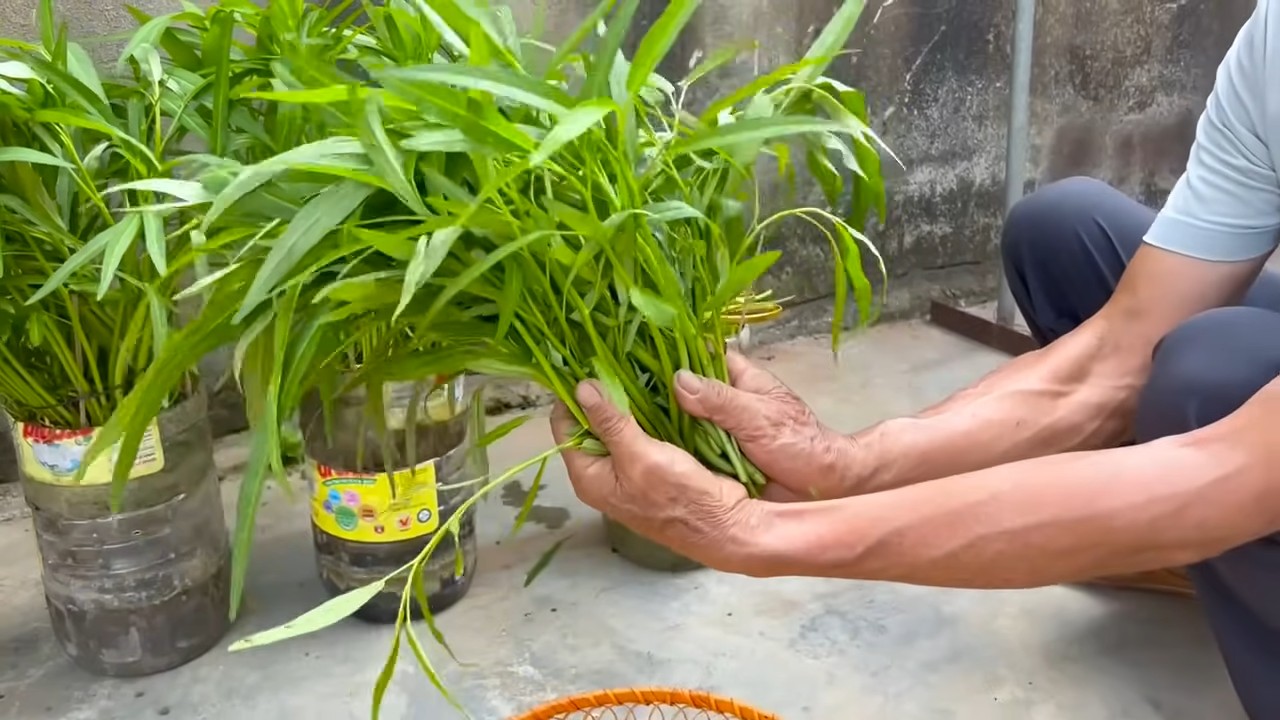
DIY Waterless Vegetable Gardening: A Guide to Thriving with Minimal Irrigation
Hey there, fellow gardening enthusiasts! I’m so excited to share one of my favorite gardening techniques with you: waterless vegetable gardening. It might sound like magic, but it’s totally achievable, especially if you live in an area with limited water resources or just want to be more eco-conscious. This method focuses on building healthy soil that retains moisture, reducing the need for frequent watering. Let’s dive in!
Understanding the Principles of Waterless Gardening
Before we get our hands dirty, let’s understand the core principles behind this method. It’s all about creating a self-sustaining ecosystem in your garden bed.
* Soil Health is Key: The foundation of waterless gardening is rich, healthy soil. We’re aiming for soil that acts like a sponge, holding onto water and nutrients.
* Mulch, Mulch, Mulch: Mulch is your best friend! It acts as a protective layer, reducing evaporation, suppressing weeds, and gradually enriching the soil as it decomposes.
* Plant Selection Matters: Choosing drought-tolerant varieties is crucial. These plants are naturally adapted to survive with less water.
* Strategic Planting: Grouping plants with similar water needs and using companion planting techniques can further optimize water usage.
* Water Harvesting (Optional): While the goal is waterless gardening, collecting rainwater can provide a backup source during extended dry periods.
Preparing Your Waterless Garden Bed
This is where the magic begins! A well-prepared bed is essential for success.
1. Choose Your Location: Select a spot that receives at least 6-8 hours of sunlight per day. Consider the mature size of your plants when planning the layout.
2. Clear the Area: Remove any existing grass, weeds, rocks, and debris from the area. A clean slate is essential.
3. Amend the Soil (The Most Important Step!): This is where we build that water-retaining powerhouse.
* Dig Deep: Loosen the soil to a depth of at least 12 inches. This allows for better root penetration and water infiltration.
* Add Organic Matter: This is the secret ingredient! Incorporate generous amounts of compost, well-rotted manure, leaf mold, or other organic materials. Aim for a ratio of at least 50% organic matter to native soil. The more, the better! I usually use a mix of composted kitchen scraps, aged manure from a local farm, and shredded leaves I’ve collected in the fall.
* Incorporate Biochar (Optional but Recommended): Biochar is a charcoal-like substance that significantly improves soil structure and water retention. It acts like a sponge, holding onto water and nutrients. If you can get your hands on some, definitely add it to the mix.
* Mix Thoroughly: Use a garden fork or tiller to thoroughly mix the organic matter and biochar into the existing soil. You want a consistent, well-blended mixture.
4. Create Raised Beds (Optional): Raised beds offer several advantages, including improved drainage, warmer soil temperatures, and easier access. You can build them from wood, stone, or other materials. If you choose raised beds, fill them with the same soil mixture described above.
5. Water Deeply: After amending the soil, water the bed thoroughly. This helps to settle the soil and activate the beneficial microbes.
Selecting Drought-Tolerant Vegetables
Choosing the right plants is crucial for waterless gardening. Here are some of my favorite drought-tolerant vegetables:
* Tomatoes (Certain Varieties): Roma, San Marzano, and cherry tomatoes are generally more drought-tolerant than larger beefsteak varieties.
* Peppers: Bell peppers, jalapenos, and other peppers are relatively drought-tolerant once established.
* Eggplant: Eggplant thrives in warm, dry conditions.
* Squash (Winter Squash): Butternut squash, acorn squash, and other winter squash varieties are well-suited to waterless gardening.
* Beans (Certain Varieties): Lima beans and cowpeas are more drought-tolerant than other bean varieties.
* Okra: Okra is a heat-loving vegetable that can tolerate dry conditions.
* Herbs: Rosemary, thyme, oregano, and lavender are all drought-tolerant herbs.
* Greens: Spinach, kale, and chard are surprisingly drought-tolerant once established.
Important Note: Even drought-tolerant plants need some initial watering to get established. Don’t expect them to thrive without any water at all, especially when they’re young.
Planting Your Waterless Garden
Now for the fun part!
1. Plan Your Layout: Consider the mature size of your plants and their sunlight requirements when planning the layout. Group plants with similar water needs together.
2. Planting Time: Plant your vegetables at the appropriate time of year for your climate. Consult a local planting calendar for guidance.
3. Dig Planting Holes: Dig holes that are slightly larger than the root balls of your plants.
4. Add Compost to Planting Holes: Add a handful of compost to each planting hole to provide extra nutrients.
5. Plant Carefully: Gently remove the plants from their containers and place them in the planting holes. Make sure the top of the root ball is level with the surrounding soil.
6. Backfill with Soil: Fill the planting holes with soil and gently firm the soil around the plants.
7. Water Thoroughly (Initially): Water the newly planted vegetables thoroughly to help them establish their roots. This is the last time you’ll be watering deeply unless there’s an extended drought.
8. Mulch Generously: This is where the magic happens! Apply a thick layer of mulch (3-4 inches) around your plants. Use organic mulch such as straw, wood chips, shredded leaves, or grass clippings. Make sure to keep the mulch away from the stems of the plants to prevent rot.
Maintaining Your Waterless Garden
Waterless gardening isn’t completely hands-off, but it requires significantly less watering than traditional gardening.
1. Monitor Soil Moisture: Check the soil moisture regularly by sticking your finger into the soil. If the top inch or two is dry, it’s time to water. However, resist the urge to overwater!
2. Water Sparingly (If Needed): If you need to water, water deeply and infrequently. This encourages the roots to grow deeper, making the plants more drought-tolerant.
3. Weed Regularly: Weeds compete with your vegetables for water and nutrients. Remove them regularly to keep your garden healthy.
4. Add Compost Regularly: Continue to add compost to your garden bed throughout the growing season. This will help to maintain soil fertility and water retention. You can side-dress your plants with compost or add it as a top dressing.
5. Consider Companion Planting: Companion planting can help to improve water usage and overall garden health. For example, planting basil near tomatoes can help to repel pests and improve tomato growth.
6. Harvest Regularly: Harvesting your vegetables regularly encourages them to produce more.
Troubleshooting Common Issues
Even with the best planning, you might encounter some challenges. Here are a few common issues and how to address them:
* Wilting Plants: Wilting can be a sign of underwatering, but it can also be caused by other factors such as heat stress or disease. Check the soil moisture before watering. If the soil is moist, the wilting may be due to another issue.
* Yellowing Leaves: Yellowing leaves can be a sign of nutrient deficiency. Add compost or a balanced fertilizer to the soil.
* Pest Problems: Monitor your plants regularly for pests. Use organic pest control methods such as insecticidal soap or neem oil.
* Disease Problems: Choose disease-resistant varieties and practice good garden hygiene to prevent disease problems.
Advanced Techniques for Waterless Gardening
Once you’ve mastered the basics, you can explore some advanced techniques to further optimize your waterless garden:
* Hugelkultur: Hugelkultur involves burying logs and branches in your garden bed. As the wood decomposes, it acts like a sponge, holding onto water and nutrients.
* Swales: Swales are shallow ditches that are dug along the contour of the land to capture rainwater and allow it to infiltrate the soil.
* Rain Gardens: Rain gardens are planted with native plants that can tolerate both wet and dry conditions. They help to capture rainwater runoff and reduce erosion.
* No-Till Gardening: No-till gardening involves minimizing soil disturbance. This helps to preserve soil structure and beneficial microbes.
The Benefits of Waterless Gardening
Waterless gardening offers numerous benefits:
* Water Conservation: The most obvious benefit is reduced water consumption.
* Reduced Labor: Less watering means less time spent in the garden.
* Healthier Plants: Plants grown in healthy, well-
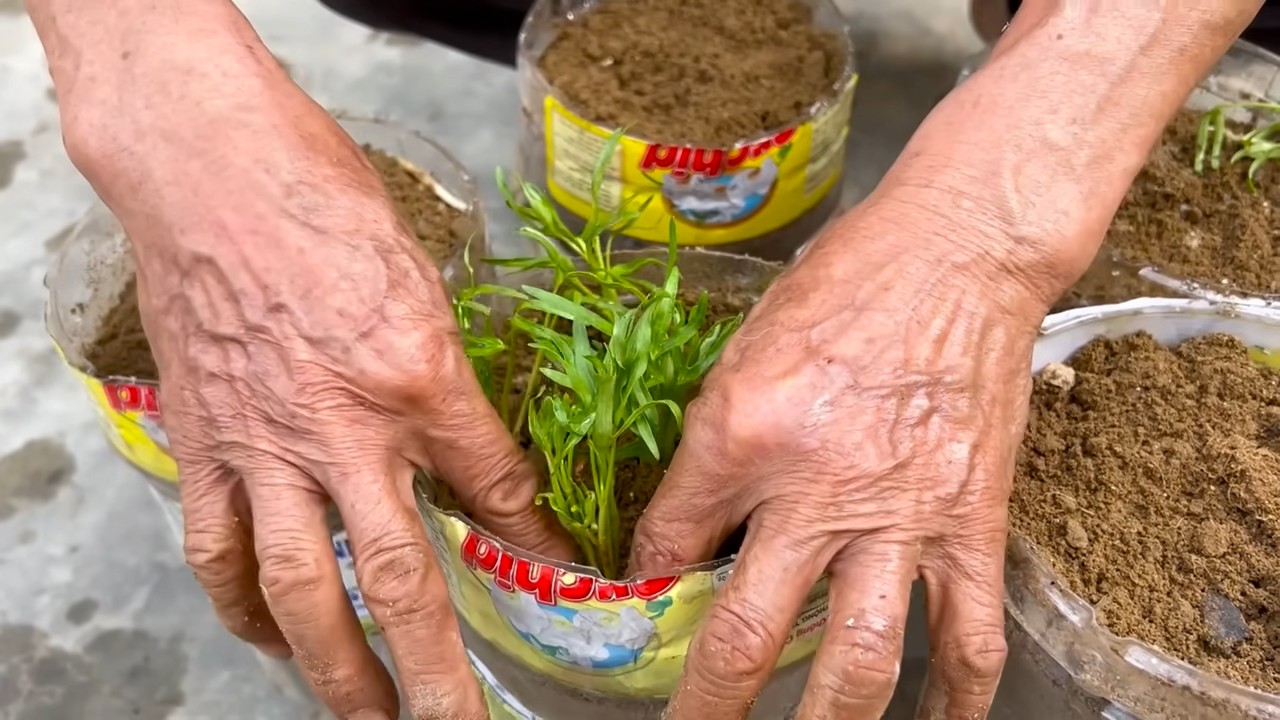
Conclusion
So, there you have it! Waterless vegetable gardening isn’t just a trendy buzzword; it’s a practical, sustainable, and incredibly rewarding way to grow your own food, even in arid climates or during periods of water scarcity. We’ve explored the core principles, the key techniques like hugelkultur and wicking beds, and the importance of soil health and mulching. But why is this DIY trick a must-try?
Firstly, it’s about **resourcefulness**. In a world increasingly aware of environmental challenges, reducing our water consumption is paramount. Waterless vegetable gardening allows you to contribute to water conservation efforts without sacrificing the joy and benefits of fresh, homegrown produce. Imagine the satisfaction of harvesting a bountiful crop knowing you’ve done so with minimal environmental impact.
Secondly, it’s about **resilience**. Traditional gardening methods can be heavily reliant on consistent watering, making them vulnerable to droughts and water restrictions. Waterless techniques, on the other hand, create self-sustaining ecosystems that are far more resilient to these challenges. Your garden becomes less dependent on external inputs, allowing you to weather environmental fluctuations with greater confidence.
Thirdly, it’s about **improved soil health**. The techniques used in waterless gardening, such as composting and mulching, actively improve the quality of your soil. This leads to healthier plants, richer harvests, and a more vibrant garden ecosystem overall. You’re not just growing vegetables; you’re building a thriving soil food web that will benefit your garden for years to come.
But don’t think you’re limited to just one approach! The beauty of waterless vegetable gardening lies in its adaptability. Feel free to experiment with different techniques to find what works best for your specific climate, soil type, and available resources.
Here are a few suggestions and variations to get you started:
* **Hugelkultur on a smaller scale:** If you don’t have the space for a full-sized hugelkultur bed, consider creating smaller mounds or even incorporating buried logs and branches into your existing garden beds.
* **Wicking beds with recycled materials:** Get creative with your wicking bed construction! Use recycled plastic containers, old bathtubs, or even repurposed IBC totes to create a sustainable and cost-effective watering system.
* **Companion planting for water conservation:** Choose companion plants that help retain moisture in the soil, such as thyme, rosemary, and oregano. These herbs also offer the added benefit of attracting beneficial insects to your garden.
* **Explore different mulching materials:** Experiment with different types of mulch, such as straw, wood chips, shredded leaves, or even cardboard, to see which works best for your soil and climate.
* **Incorporate rainwater harvesting:** While the goal is waterless gardening, collecting rainwater can provide a valuable supplemental water source during particularly dry periods.
Ultimately, waterless vegetable gardening is about embracing a more sustainable and mindful approach to growing food. It’s about working with nature, rather than against it, to create a thriving garden that benefits both you and the environment.
So, we encourage you to take the plunge and try this DIY trick for yourself. Start small, experiment with different techniques, and don’t be afraid to learn from your mistakes. The rewards of waterless vegetable gardening are well worth the effort.
And most importantly, we want to hear about your experiences! Share your successes, your challenges, and your tips with us and the wider gardening community. Let’s learn from each other and create a more sustainable future, one waterless garden at a time. Share your photos and stories on social media using relevant hashtags, or leave a comment below to let us know how it’s going. Happy gardening!
Frequently Asked Questions (FAQ)
What exactly is waterless vegetable gardening?
Waterless vegetable gardening is a method of growing vegetables with minimal or no supplemental watering after the initial planting. It relies on techniques that conserve moisture in the soil, such as mulching, composting, hugelkultur, and wicking beds. The goal is to create a self-sustaining ecosystem that provides plants with the water they need to thrive, even in dry conditions. It’s not about growing plants without any water at all, but rather about maximizing water retention and minimizing water waste.
Is waterless gardening only for dry climates?
No, while it’s particularly beneficial in dry climates, waterless gardening can be practiced anywhere. Even in areas with regular rainfall, these techniques can help reduce water consumption, improve soil health, and create a more resilient garden. It’s about being mindful of water usage and creating a more sustainable gardening system regardless of your local climate.
What types of vegetables grow best in a waterless garden?
Many vegetables can thrive in a waterless garden, especially those that are drought-tolerant or have deep root systems. Some good choices include:
* Tomatoes (especially determinate varieties)
* Peppers
* Eggplant
* Squash (especially winter squash)
* Beans
* Okra
* Sweet potatoes
* Herbs (such as rosemary, thyme, and oregano)
* Leafy greens (with proper mulching and shade)
It’s important to choose varieties that are well-suited to your local climate and soil conditions.
How do I prepare the soil for waterless gardening?
Soil preparation is crucial for success. Focus on improving soil structure, water retention, and nutrient content. Here are some key steps:
* **Amend with organic matter:** Incorporate plenty of compost, aged manure, or other organic materials to improve soil structure and water-holding capacity.
* **Add clay:** If you have sandy soil, adding clay can help improve water retention.
* **Mulch heavily:** Apply a thick layer of mulch around your plants to conserve moisture, suppress weeds, and regulate soil temperature.
* **Consider hugelkultur or wicking beds:** These techniques are specifically designed to improve water retention and create a self-sustaining growing environment.
How often do I need to water a waterless garden?
The goal is to minimize watering, but you’ll likely need to water initially to help plants establish their root systems. After that, monitor your plants closely and water only when necessary. Signs of water stress include wilting leaves, stunted growth, and dry soil. When you do water, water deeply and thoroughly to encourage deep root growth. Over time, as your soil improves and your plants become more established, you should be able to reduce watering frequency significantly.
What is hugelkultur, and how does it work?
Hugelkultur is a gardening technique that involves building raised beds filled with decaying wood and other organic matter. As the wood decomposes, it acts like a sponge, absorbing and retaining water. This creates a self-watering system that provides plants with a consistent supply of moisture. Hugelkultur beds also improve soil fertility and drainage.
What are wicking beds, and how do they work?
Wicking beds are raised garden beds with a waterproof liner and a reservoir of water at the bottom. The water is drawn up into the soil through capillary action, providing plants with a consistent supply of moisture from below. This method reduces water loss through evaporation and ensures that plants receive water directly at their roots.
Can I use fertilizer in a waterless garden?
While the focus is on natural methods, you can use organic fertilizers to supplement your plants’ nutrient needs. Compost tea, worm castings, and fish emulsion are all good options. Avoid synthetic fertilizers, as they can harm the soil ecosystem and reduce water retention.
How do I deal with pests and diseases in a waterless garden?
Healthy soil and strong plants are naturally more resistant to pests and diseases. Focus on creating a thriving garden ecosystem by using companion planting, attracting beneficial insects, and avoiding the use of harmful chemicals. If you do encounter pests or diseases, use organic control methods such as neem oil, insecticidal soap, or Bacillus thuringiensis (Bt).
What if I live in an area with very little rainfall?
Even in areas with very little rainfall, waterless gardening is possible. Focus on techniques that maximize water retention, such as hugelkultur, wicking beds, and heavy mulching. Choose drought-tolerant plant varieties and consider using shade cloth to reduce evaporation. You may also need to supplement with rainwater harvesting or other water sources during particularly dry periods. Remember, the key is to create a self-sustaining ecosystem that minimizes water loss and provides plants with the resources they need to thrive.


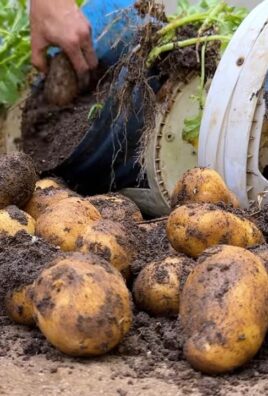
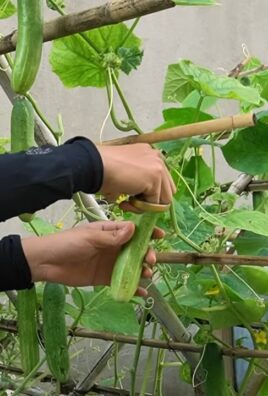
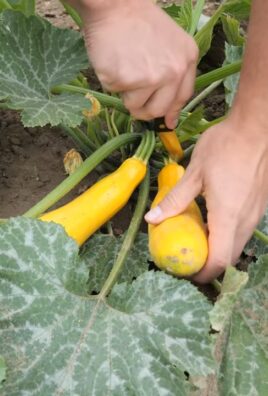
Leave a Comment